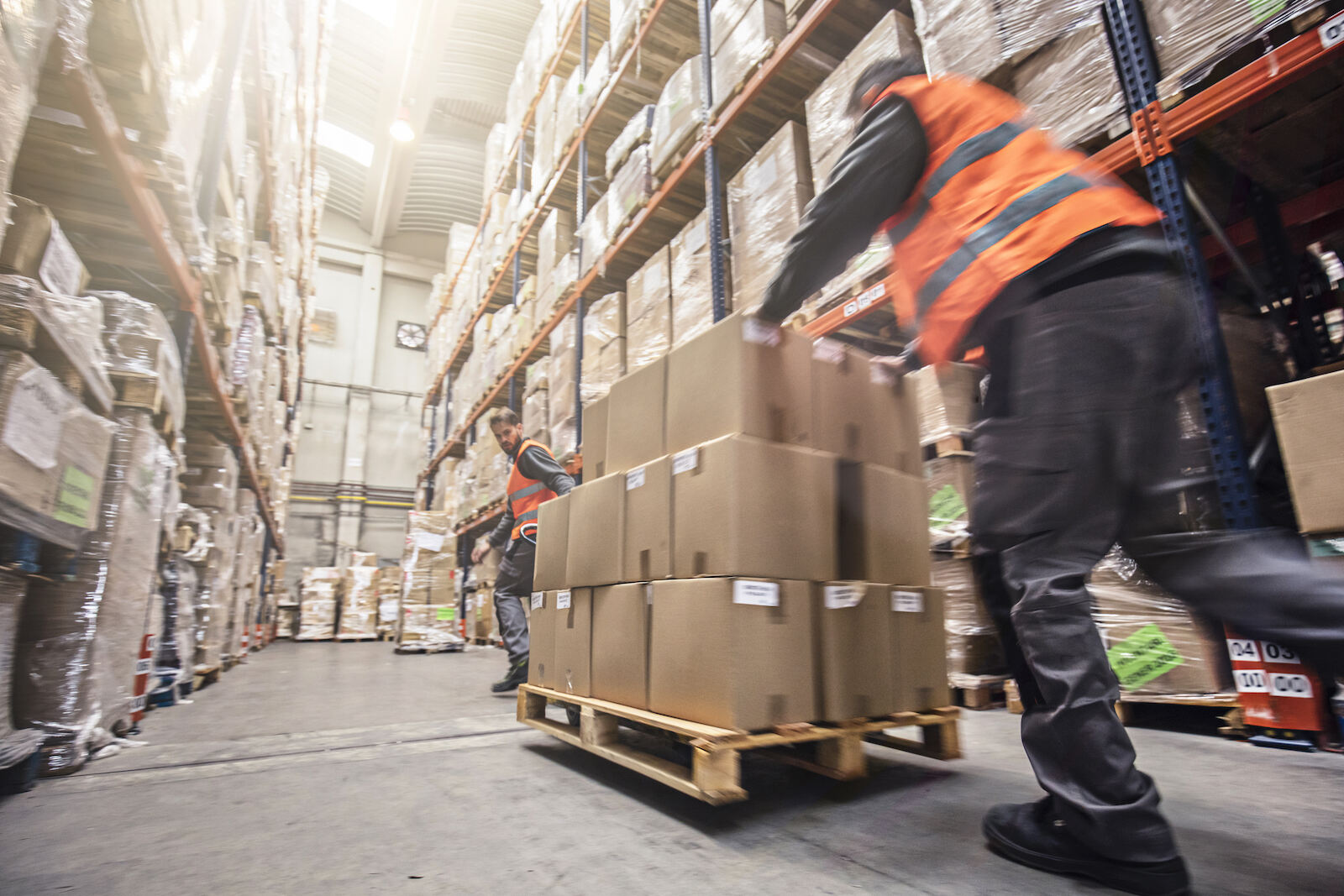Understanding China-Based 3PL for Beauty Brands
Beauty and the third-party beast (3PL) 3PL changes the game of how beauty brands manage global distribution by outsourcing warehousing, fulfillment, and transportation functions to the pros in China. Beauty companies reap manufacturing proximity benefits – reduced transit time options to export hubs in Guangzhou and Shanghai by up to 40% while skip redundant handling. This gives you 20-30% in freight savings versus other multi stage shipping models. In contrast to the regional players, China 3PL uses production-sites-served outflows rather than trans-shipment that results in easy movement of skincare essentials and cosmetic consignments to target markets.
The operational change removes costs such as overseas warehousing (Capex) and integrated customs documentation pre-clearance accelerates cross-border delivery times. Demand spikes, such as a holiday launch, are easily scalable with elastic storage. Important for founders, this model enables them to redirect resources from logistical firefighting into formulation innovation and consumer engagement – crucial in the trend-led beauty industry. Local knowledge of how to move through China's export compliance also lessens the compliance risk for temperature-sensitive serums and aerosols.
Core Benefits of China-Based 3PL Fulfillment
Cost Reduction Strategies for Beauty Product Shipping
China-based 3PL providers cut fulfillment costs by 30–50% through bulk shipping agreements and minimized warehousing needs. Centralized export processing eliminates redundant customs fees, while optimized packaging reduces dimensional weight charges. Some providers also utilize bonded warehouse zones to defer tax payments until goods are dispatched internationally, easing cash flow pressure. Additionally, custom-fit packaging solutions for lightweight but voluminous items like skincare sets help avoid excess freight charges, further enhancing cost efficiency without compromising product integrity.
Scalability Advantages During Business Growth Phases
3PL partners enable 48-hour warehouse capacity adjustments during product launches or seasonal demand spikes. Shared fulfillment networks provide access to 15M+ sq ft of temperature-controlled storage across China without capital investments. This elasticity allows beauty brands to scale operations in real time without the delays of facility buildouts or staffing surges. Furthermore, inventory rebalancing across multiple nodes ensures optimal stock placement near demand centers, reducing last-mile delivery times and improving service levels during peak sales windows.
Operational Focus for Brand Development
Outsourcing fulfillment reclaims 350–500 annual staff hours for core beauty business activities—equivalent to 20% faster product development cycles. Brands redirect savings into market research and customer retention programs, enabling them to respond more quickly to emerging trends and consumer feedback. This operational focus strengthens brand positioning by allowing teams to concentrate on formulation innovation, influencer partnerships, and campaign execution rather than managing logistics bottlenecks. Over time, this shift contributes to faster go-to-market timelines and increased brand loyalty.

China-Based 3PL Implementation Challenges
Communication Barriers in Cross-Cultural Logistics
Operational delays frequently stem from linguistic misunderstandings between global beauty brands and Chinese logistics teams. Standardizing communication protocols through bilingual project management systems reduces errors significantly, especially during complex coordination tasks like customs documentation, temperature-sensitive labeling, and synchronized launch timelines. Many brands now require 24/7 English-Chinese customer support channels and assign bilingual account managers to ensure seamless coordination across time zones and regulatory environments.
Quality Control Complexities for Beauty Products
Temperature-sensitive skincare shipments require stringent monitoring throughout transit—a challenge amplified by multi-modal transport routes that expose products to varying environmental conditions. Variations in temperature or humidity, even for short periods, can compromise the stability of active ingredients like peptides or retinoids. Implementing blockchain-tracked environmental sensors not only improves product integrity compliance but also provides real-time visibility and immutable audit trails. This transparency enables proactive intervention when deviations occur, reducing spoilage rates and ensuring that products arrive with their efficacy intact.
Navigating International Regulatory Compliance
Navigating international regulatory compliance presents a complex hurdle for beauty brands partnering with China-based 3PL providers. Dual jurisdiction requirements—such as China's GB standards versus the EU’s Cosmetic Regulation No. 1223/2009 or FDA labeling mandates—often result in conflicting documentation, ingredient disclosures, or packaging specifications. These mismatches can lead to costly shipment holds or outright rejections at the border. Proactive harmonization through REACH-certified chemical screening and standardized labeling protocols is essential to bridge these gaps. For organic and natural formulations, which frequently fall into regulatory gray zones, preemptive compliance mapping and documentation audits significantly reduce the risk of customs seizures and improve time-to-market efficiency.
Cost-Benefit Analysis: In-House vs China-Based 3PL
Infrastructure Investment Comparison Matrix
Managing fulfillment internally demands substantial infrastructure investment, typically ranging from $240,000 to $780,000 annually when accounting for facility leasing, staffing, equipment maintenance, and regulatory compliance. These fixed costs can strain the budgets of emerging beauty brands, especially when seasonal demand volatility leaves warehouse space underutilized. In contrast, partnering with China-based 3PL providers offloads these capital expenditures, as fulfillment centers, labor, and operational overhead are bundled into flexible service agreements. This model transforms logistics from a capital-heavy function into a scalable, variable-cost structure, allowing brands to allocate more resources toward innovation, marketing, or global expansion.
2023 Fulfillment Cost Benchmarks in Beauty Sector
In 2023, direct-to-consumer fulfillment costs for beauty brands averaged $4.15 per unit when handled in-house, factoring in labor, packaging, warehousing, and administrative overhead. By comparison, China-based 3PL providers delivered the same service for $2.80 to $3.25 per unit, offering significant savings—especially at scale. A key driver of this gap is efficiency in cross-border processing: international customs compliance, which consumes up to 35% of internal fulfillment labor time, is streamlined in Chinese 3PL operations through integrated pre-clearance systems and consolidated documentation workflows. This not only lowers costs but also accelerates delivery timelines and reduces shipment error rates.
ROI Timelines for Outsourced Operations
Transitioning to China-based 3PLs delivers a median return on investment (ROI) within 8 to 14 months, primarily due to significant reductions in inventory carrying costs, improvements in labor productivity, and optimized freight consolidation. These providers enable brands to shift from fixed to variable logistics costs, which improves cash flow and reduces operational risk during demand fluctuations. Additionally, the ability to scale fulfillment infrastructure without upfront capital expenditures accelerates break-even points, especially during product launches or regional expansions. For beauty brands managing perishable or trend-sensitive SKUs, this rapid ROI timeline can directly impact competitive positioning and profitability.
The Automation Paradox in Outsourced Logistics
While automation adoption increases 3PL picking accuracy to 99.8%, contracted service tiers can create access barriers for emerging beauty brands that require specialized handling, such as delicate packaging or low-MOQ (minimum order quantity) SKUs. Many large-scale Chinese 3PLs prioritize high-volume clients when allocating robotic picking lanes or ASRS (Automated Storage and Retrieval Systems), leaving smaller players to rely on less automated workflows. This gap often forces niche or indie brands to compromise on handling precision or invest in premium service tiers, potentially eroding the cost savings that drove them to outsource in the first place.
Strategic Selection of China-Based 3PL Providers
Contract Negotiation Framework for Scalable Growth
Effective agreements balance flexibility and accountability during expansion phases. Key concessions to secure:
- Performance incentives for exceeding SLA targets
- Growth-triggered warehouse space allocation
- Termination rights with data-portability guarantees
Future-Proofing with China-Based 3PL Ecosystems
Future-proofing through China-based third-party logistics (3PL) ecosystems requires strategic integration of emerging technologies like AI-driven demand forecasting and IoT-enabled shipment tracking. Scalability now depends on modular warehousing configurations that accommodate rapid SKU diversification–a critical capability as beauty brands expand product lines annually.
Sustainable innovation separates forward-thinking 3PL partners, with consolidated sea freight strategies reducing carbon emissions by 34%. Proactive adopters also implement blockchain-based compliance tracking, future-proofing operations against tightening EU cosmetic regulations and China’s packaging sustainability mandates.
FAQ
What is 3PL and how does it benefit beauty brands?
3PL, or third-party logistics, involves outsourcing warehousing, fulfillment, and transportation functions to specialized providers. For beauty brands, this means reduced shipping costs, faster delivery times, and the ability to focus more on product innovation and marketing efforts.
What challenges do beauty brands face when implementing China-based 3PL?
Challenges include communication barriers due to linguistic differences, quality control complexities for temperature-sensitive products, and navigating international compliance regulations.
How does 3PL impact global distribution for beauty brands?
China-based 3PL allows beauty brands to optimize their global distribution networks, reducing transit times significantly when compared to traditional transit models. This efficiency can be seen in reduced delivery times to markets such as the US East Coast and EU fashion hubs.
What are the potential savings when switching to China-based 3PL?
Brands could see a 30-50% reduction in fulfillment costs, lower per-unit direct-to-consumer expenses, and potential ROI within 8-14 months due to lower operational costs and increased labor efficiency.



